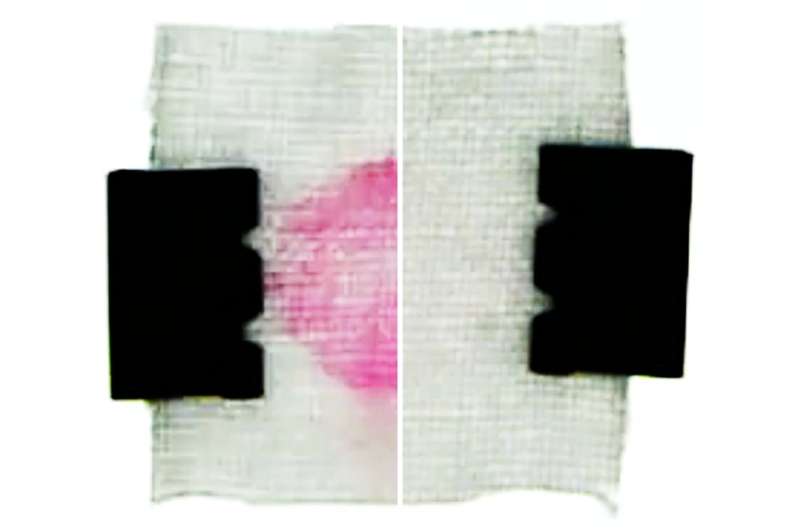March 23, 2018 report
Diffusiophoresis found to be critical factor for getting clothes clean

A team of researchers with members from the University of Hawaii, the Unilever company and Princeton University has found that the critical factor involved in cleaning clothes in a washing machine is a phenomenon called diffusiophoresis, a type of diffusion caused by electric fields, combined with chemophoresis, diffusion caused by differences in concentration gradients. They have published their findings in the journal Physical Review Letters.
Humans have probably been washing their clothes for as long as they have been wearing them. The typical process generally involves swishing the clothes in water containing some type of detergent, followed by rinsing with clean water. Interestingly, despite this long history, it is unclear how, exactly, clothes become clean from this regimen. In this new effort, the research team conducted experiments in the lab to figure it out.
Stains, the researchers note, are usually due to staining agents infiltrating into small pores in fabric via capillary action. In order to clean them, a liquid must be able to make its way into the pore and then somehow pull out the staining agent. To learn more about how this process works, the researchers created material with tiny tubes 10 microns in diameter to serve as a sort of fabric—tiny polystyrene balls served as the staining agent. The researchers then "stained" their fabric and filmed the action with a microscope as the material was cleaned.
The team reports that the water with the detergent was unable to infiltrate all the way into the pore, but because the detergent contained ingredients that prevented the material from repelling water while also attracting the staining agent, the stain was primed for removal. When the water containing detergent was replaced with clean water, the staining agent was pulled from the pores due to chemophoresis. Interestingly, they found that if they tried rinsing the material with detergent-bearing water, chemophoresis did not occur and the stain remained in place.
More information: Sangwoo Shin et al. Cleaning by Surfactant Gradients: Particulate Removal from Porous Materials and the Significance of Rinsing in Laundry Detergency, Physical Review Applied (2018). DOI: 10.1103/PhysRevApplied.9.034012
ABSTRACT
Removing particles from fibrous materials involves loosening via surfactants followed by particle transfer in a flow. While flow advection is commonly believed to be the major driver for pore-scale transport, small pores within the fabric do not allow any significant fluid flow inside them, thus significantly reducing the role of advection. However, rinsing the fabric with fresh water naturally establishes a surfactant gradient within the pore space, providing a suitable environment for particles to undergo diffusiophoresis. We demonstrate that this mechanism can remove particles from deep within fabric pores at an accelerated rate. The nonlinear aspect of diffusiophoresis significantly prolongs the lifetime of the phoretic motion beyond the naive solute diffusion time scale during rinsing, allowing long-lasting, continuous removal of particles. Moreover, owing to the fine balance between chemiphoresis and electrophoresis for particles in anionic surfactant concentration gradients, we show that the particle removal is sensitive to the counterion mobility, suggesting a simple route to control the effect. We thus claim to have resolved the "stagnant core problem"—a long-standing mystery in laundry detergency—and have identified a physicochemical approach to particle transport in fibrous media with broad applicability.
Journal information: Physical Review Letters
© 2018 Phys.org


















